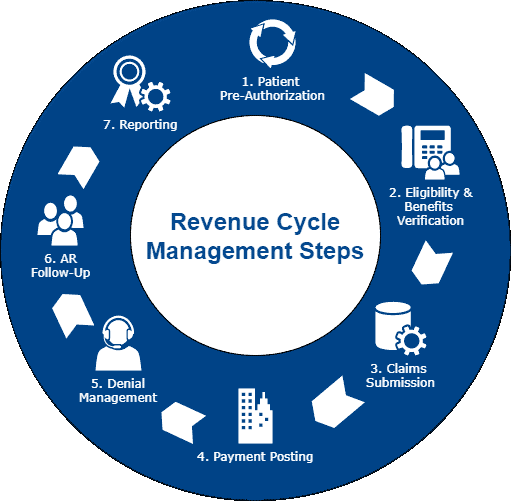
@ShahidNShah


The healthcare industry is constantly changing, and providers and insurers need to adapt to new trends to improve patient outcomes and control costs. Two significant trends that are emerging in the healthcare landscape are revenue cycle management (RCM) and value-based care. While RCM focuses on managing the financial aspects of patient care, value-based care prioritizes outcomes over volume. In this article, we will explore the intersection of these two trends and their impact on the healthcare industry.
Revenue cycle management (RCM) is a crucial component of healthcare providers’ focus, as it involves managing the financial aspects of patient care. Effective RCM can alleviate financial stress for patients, improve billing accuracy, personalize care, and support patient engagement, resulting in a better overall patient experience. Revenue integrity has emerged as a critical component of financial health as healthcare organizations grapple with the complexities of RCM. Optimizing revenue integrity requires a deep understanding of complex reimbursement policies, clinical documentation, coding guidelines, and operational processes.

The Comprehensive Revenue Cycle Flowchart Steps
In 2023, healthcare organizations should consider leveraging predictive analytics to proactively identify revenue leakage. Predictive analytics uses machine learning algorithms to analyze large volumes of data to identify patterns and predict future outcomes. By proactively identifying revenue leakage, healthcare organizations can take corrective action before the issue results in financial losses.
Patient engagement will be critical to revenue cycle performance in 2023. Engaging patients in the revenue cycle process can help healthcare organizations collect payments more efficiently, reduce denials, and improve patient satisfaction. Healthcare organizations can provide patients with real-time cost estimates that take into account their insurance coverage and deductible status. Providing patients with upfront cost estimates helps them make informed decisions about their care and reduces the likelihood of payment issues down the road.
Healthcare organizations can use mobile apps, online portals, and payment plans to make it easier for patients to pay their bills. By providing patients with convenient payment options, healthcare organizations can improve payment collection rates and reduce the risk of bad debt.
Value-based care is a departure from the traditional fee-for-service model that has been the dominant approach to healthcare for decades. In the fee-for-service model, healthcare providers are paid for each individual service they provide, regardless of whether those services actually result in better outcomes for patients. This system incentivizes providers to offer more services, even if they are not strictly necessary, which can lead to higher costs and lower quality of care.
On the other hand, value-based care encourages providers to focus on delivering the best possible outcomes for patients. Providers are paid based on the results they achieve, rather than the number of services they provide. This approach is intended to reduce waste, improve quality of care, and ultimately lower costs. Value-based care also emphasizes preventative care and early intervention, as well as patient-centered care. By taking a more personalized approach to care, providers can often achieve better outcomes and improve patient satisfaction.
Despite the potential benefits of value-based care, there are challenges to implementing this approach. One of the biggest hurdles is the need for accurate data and analytics. To measure outcomes and determine payment levels, providers and insurers need reliable data on patient health, treatment plans, and results. This requires investment in new technology and data analysis tools, which can be expensive and time-consuming. Achieving collaboration among different stakeholders in the healthcare industry is another challenge, especially given the complex and fragmented nature of the healthcare system.
Medical billing can be a complex and time-consuming process, and charge capture is a critical part of this process. Charge capture refers to the process of accurately documenting and billing for all the services provided to a patient. This is an important step in the medical billing cycle that is often overlooked.
Providers and staff members may be focused on providing quality care to patients, and entering charges into the billing system can be seen as a low-priority task. However, by not prioritizing charge capture, practices may be leaving money on the table. Regular audits, staff education, and technology solutions can help practices improve their charge capture process and prevent revenue loss.
Healthcare delivery organizations (HDOs) are constantly seeking ways to optimize their billing processes and increase revenue. With the ever-changing healthcare landscape, staying up-to-date on billing regulations and requirements can be a daunting task. However, implementing a few key strategies can help HDOs improve their billing process and ultimately boost revenue.
Effective RCM is crucial for HDOs to maximize revenue. The RCM process includes all steps from patient registration to claims processing and follow-up. Analyzing this process can identify areas for improvement such as reducing claim denials or improving charge capture. Additionally, incorporating automation and technology can streamline the process and reduce errors.
Accurate documentation is essential for billing and revenue optimization. Providers should document all procedures and diagnoses accurately and in a timely manner. This can prevent delays in claims processing and reduce the risk of claims being denied or rejected.
Verifying patient insurance coverage and eligibility before providing services can prevent denials and delays in reimbursement. HDOs should also stay up-to-date on any changes to insurance plans and coverage to avoid any surprises.
Billing and coding errors can lead to lost revenue and even legal trouble. It is essential to ensure that all staff involved in billing and coding is trained on the latest regulations and requirements. Regular training and continuing education can also help staff stay up-to-date on changes.
Tracking and analyzing KPIs such as collection rate, days in accounts receivable, and denial rate can provide valuable insights into the revenue cycle. HDOs should regularly review these metrics to identify areas for improvement and track progress towards revenue goals.
Optimizing billing processes and improving revenue requires a multifaceted approach. HDOs should focus on RCM optimization, accurate and timely documentation, insurance verification, staff training, and KPI monitoring. By implementing these strategies, HDOs can improve their billing process and ultimately increase revenue.
Healthcare delivery organizations (HDOs) have traditionally relied on manual billing processes to generate revenue. However, with the increasing adoption of electronic health records (EHRs) and other technological advancements in healthcare, the billing process and revenue streams for HDOs are changing rapidly. Technological advancements are transforming the billing process and revenue streams for HDOs. Electronic Health Records, patient portals, mobile payment options, AI, and blockchain are just a few of the technological scenarios that are changing the way HDOs do business. By embracing these technological advancements, HDOs can improve their revenue collection processes, reduce administrative burden, and improve the patient experience. Healthcare organizations seeking technological solutions to improve their revenue cycle management can consider the following options:
AZZLY offers electronic health record and revenue cycle management software specifically designed for addiction treatment professionals. It provides features like e-check-in, scheduling, appointment reminders, EHR, treatment plans, progress notes, outcome measurement tools, medication management, withdrawal management, e-prescribing, patient communication tools, and electronic billing & claims submission. The system simplifies and automates processes, which empowers staff and improves patient outcomes.
ModuleMD WISE™ is an EHR system designed by practicing physicians and office staff, with a flexible process-driven solution that maximizes workflow distribution for efficient documentation. It offers a single sign-on solution and an advanced revenue cycle management software that streamlines claim submission, collections, and reporting. The system also provides a user-friendly patient portal for nurturing patient relationships and communication.
Infinx offers accurate entry of patient demographic data, medical codes assignment, and charge calculation for the services delivered. It provides comprehensive charge capture and error elimination, which can directly impact reimbursement. The system ensures staffing levels based on patient volume and workflow rather than static capacity numbers. Additionally, Infinx’s billing professionals identify and resolve outstanding credit issues and track payments to capture more revenue.
These solutions can help healthcare organizations manage their revenue cycles more efficiently, ultimately improving patient care and outcomes.
In today’s fast-paced healthcare industry, medical practices desire effective solutions to handle patient data and streamline administrative processes. Electronic health records (EHR) have …
Connecting innovation decision makers to authoritative information, institutions, people and insights.
Medigy accurately delivers healthcare and technology information, news and insight from around the world.
Medigy surfaces the world's best crowdsourced health tech offerings with social interactions and peer reviews.
© 2025 Netspective Foundation, Inc. All Rights Reserved.
Built on Jul 1, 2025 at 1:20pm